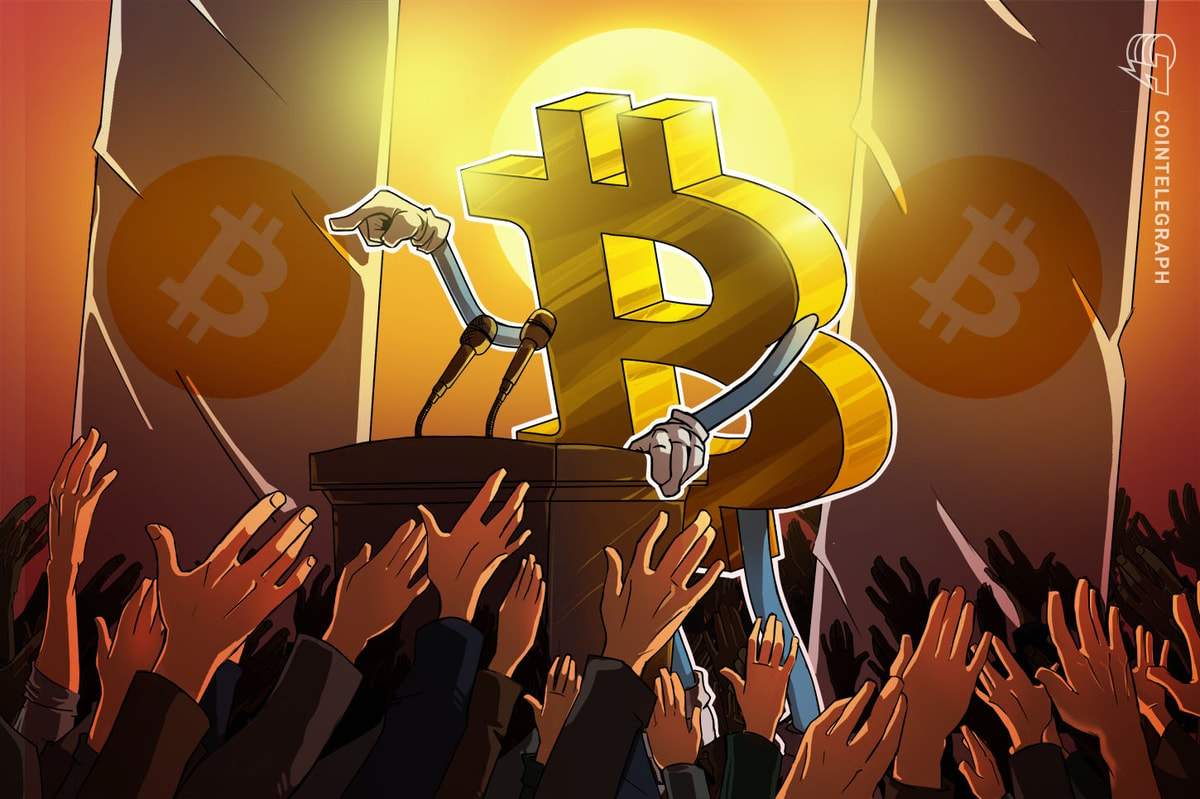As Bitcoin gains recognition as a potential national reserve asset, the crypto community must ensure it remains accessible to the public and true to its decentralized roots.
Opinion
Opinion by: Ryan Chow, CEO of Solv Protocol
Establishing strategic Bitcoin reserves is on everyone’s agenda right now, propelled by big moves from the US administration and more.
While this development would represent a significant milestone in Bitcoin’s (BTC) journey, it also raises important questions about the accessibility and democratization of digital assets.
As crypto’s most recognizable currency transitions from Satoshi Nakamoto’s original nine-page white paper to becoming a top-tier asset recognized by the world’s financial powers, the implications of this shift warrant close scrutiny.
If more and more Bitcoin is locked away in cold wallets deep in the vaults of central banks, will the current crypto natives and the billions of future users become mere spectators, watching Bitcoin drift further out of reach?
Elevating Bitcoin to reserve status
The elevation of Bitcoin to strategic reserve asset status would be a hugely positive development. The currency’s progression would demonstrate the extraordinary potential of digital assets, particularly evident in Bitcoin’s staggering advancement from exchange-traded fund inclusion to potential national strategic reserve status within a single year.
Bitcoin’s integration into national reserves would position it alongside traditional strategic assets like gold and oil, securing its place within the mainstream financial system. This development would likely drive central global banks to recognize Bitcoin as a qualified asset and expand their associated financial services.
The fundamental attributes distinguishing Bitcoin, including transparency and liquidity, offer significant advantages over traditional assets. In traditional finance, small business loans often require collateral, like real estate, which is challenging to fractionalize or manage. Real estate also lacks liquidity and price transparency. Using Bitcoin as collateral offers clear ownership, easy fractionalization, transparent pricing and excellent liquidity, making it the most efficient collateral in history.
This potential widespread adoption of Bitcoin by mainstream finance and the public sector would integrate it throughout the economic landscape, delivering significant advantages for entrepreneurs, individuals and governments.
The potential danger of Bitcoin becoming the new gold
The optimistic outlook for Bitcoin’s future rests on maintaining a delicate balance between government and public ownership, particularly preserving individual and business freedom to own, trade and utilize Bitcoin. A concerning scenario could, however, emerge: As Bitcoin potentially achieves national reserve asset status, it risks becoming increasingly locked away in central bank cold wallets, reducing market accessibility.
Recent: Missouri bill proposes Bitcoin reserve fund for state investments
This concern is not unfounded and finds historical precedent in gold’s trajectory. The 19th century saw gold serving dual roles as government and public financial assets. Executive Order 6102 in 1933, however, fundamentally changed this dynamic by prohibiting private gold ownership, requiring US citizens to surrender holdings exceeding $100 to the Federal Reserve.
Despite restoring private gold ownership rights in 1974, four decades of separation, combined with government accumulation, had transformed gold into a luxury commodity with diminished financial utility. While Bitcoin has not yet faced similar restrictions, the risk of “soft bans” through government accumulation warrants attention and is a real risk.
The critical consideration lies in Bitcoin’s trajectory — whether it becomes more accessible or more restricted, dynamic or static in economic activity. If Bitcoin increasingly gets reserved in a closed-off manner and is withdrawn from economic activity and markets, it risks becoming the “new gold.” To secure Bitcoin’s future value, it must become more open and accessible, allowing even more people to hold and use it.
Making a case for open Bitcoin reserves
Developing an open Bitcoin ecosystem remains fundamental to Bitcoin decentralized finance, or BTCfi, and DeFi principles. In response to the potential emergence of national Bitcoin reserves, the DeFi community must advocate for accessible, open Bitcoin reserves.
Bitcoin’s relatively static nature, compared to other cryptocurrencies, has historically limited its participation in crypto-economic activities. It is often seen as too slow and cumbersome to use. The rise of BTCFi in late 2023 has begun to address this limitation, aiming to unlock Bitcoin’s full potential.
Establishing national Bitcoin reserves necessitates the creation of open Bitcoin reserves, which would be characterized by universal accessibility, transparent and decentralized architectures, and the issuance of credible, transparent, highly liquid reserve-backed assets.
Projects must demonstrate commitment to this vision by working alongside traditional finance and the crypto industry to establish an open Bitcoin reserve system that would integrate the asset into real-world economic activities while continuously capturing new value.
As nations gear up to potentially establish Bitcoin reserves, the cryptocurrency community must ensure that institutional adoption enhances, rather than restricts, public access to digital assets. The future of Bitcoin depends on maintaining its foundational principles of accessibility and decentralization while adapting to its evolving role in the global financial system.
Elon Musk once called Dogecoin (DOGE) “the people’s crypto.” Whether or not this is true is subjective. In an era of national Bitcoin reserves, there is a need for a “people’s Bitcoin reserve” to prevent it from following in gold’s footsteps.
Opinion by: Ryan Chow, CEO of Solv Protocol.
This article is for general information purposes and is not intended to be and should not be taken as legal or investment advice. The views, thoughts, and opinions expressed here are the author’s alone and do not necessarily reflect or represent the views and opinions of Cointelegraph.
This article first appeared at Cointelegraph.com News

